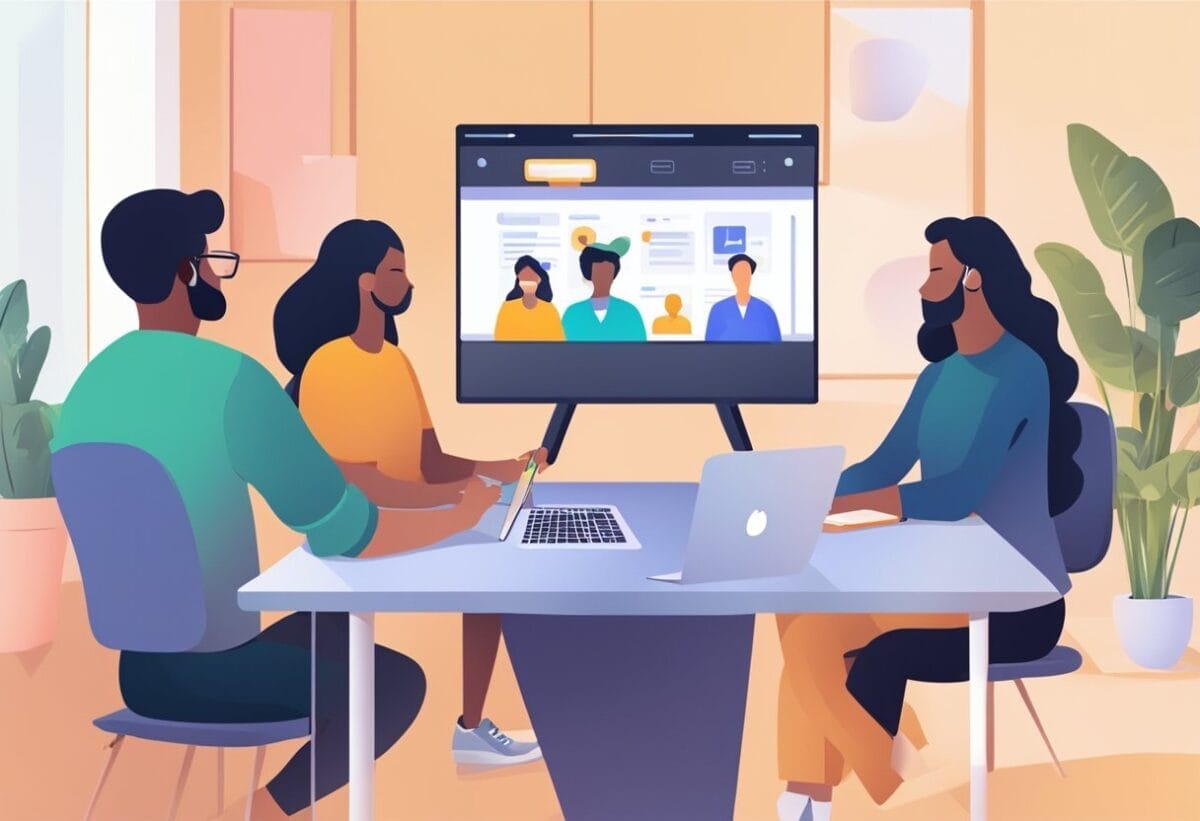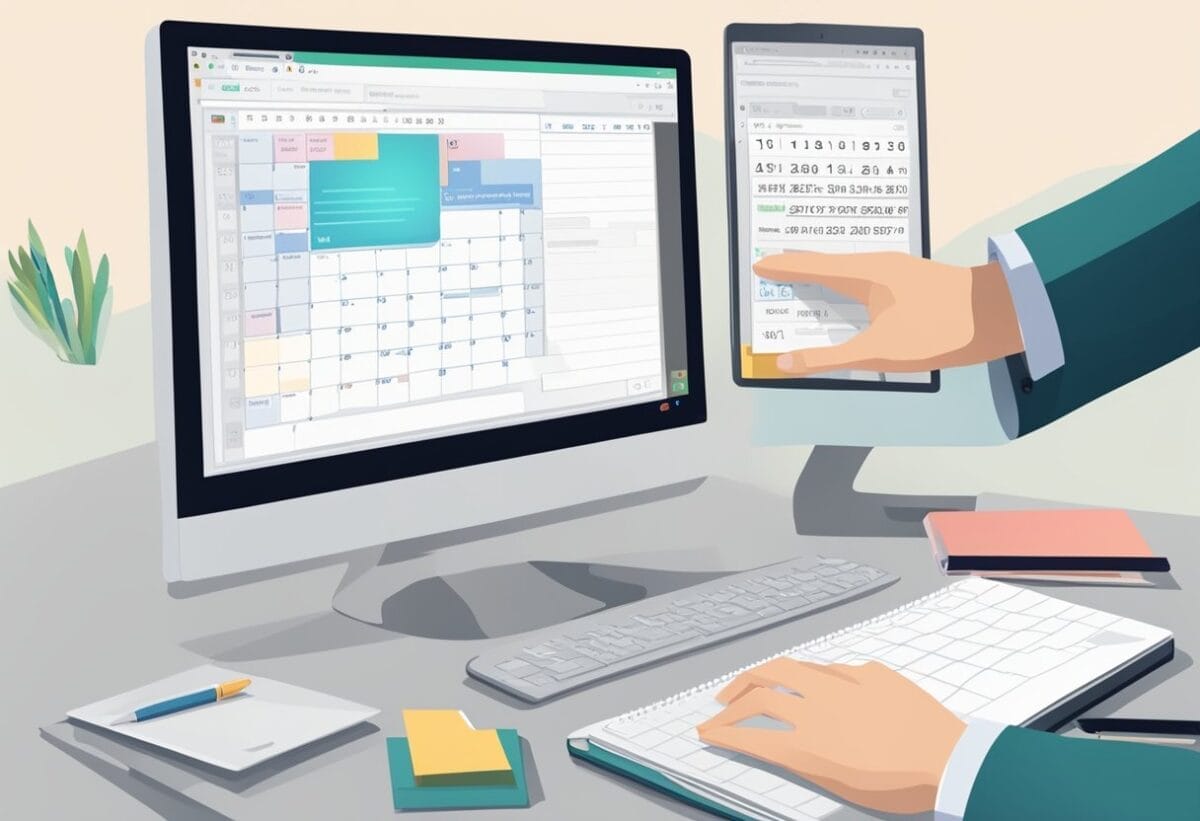|
Listen To Article
Getting your Trinity Audio player ready...
|
Starting an online meeting effectively is when all participants can contribute to the meeting itself. To get started, you need a clear plan that sets expectations and objectives.
Keep in mind the type of meeting you’re conducting, whether it’s a brainstorming session, an instructional webinar, or a business strategy discussion, as each may require different tools and approaches.
KEY TAKEAWAYS
- Plan and define meeting objectives.
- Prepare tools and inform participants.
- Engage and follow up post-meeting.
How to Start An Online Meeting Effectively For Remote Teams?
55% of remote workers think majority of online meetings “could have been an email” and 71% of managers thinks that meetings are unproductive. However, this can be avoided if you follow some of the best practice of online meeting.
- Equip yourself with a robust platform that meets your needs
- Actively engaging participants and managing the session’s flow
- Set clear action items and follow-ups
Lastly, if the meeting can be replaced by an email, use email to communicate instead, it is much more effective.
Step 1: Planning Your Online Meeting

Preparing to host an online meeting requires a thoughtful approach. Start with clear goals, a structured agenda, and the right software to ensure a seamless experience.
Setting Clear Objectives
Define what you want to achieve with your meeting. Whether it’s decision-making, brainstorming, or information sharing, your objectives guide the entire process. Establish these early to shape a focused discussion and drive meaningful results.
Creating an Agenda
A detailed agenda is the blueprint of your meeting. List topics in order of priority with allocated time slots. It ensures that discussions remain on track and all key points are covered efficiently. Be sure to circulate the agenda ahead of time to prepare participants for a productive session.
Choosing the Right Conferencing Software
Select a conferencing software that fits the scale and nature of your meeting. Consider features such as screen sharing, recording capability, and interactive tools. Reliable software is crucial to facilitate engagement and collaboration. Review recommendations to find the best meeting software for your needs, especially if managing remote or hybrid teams.
Step 2: Preparing for the Meeting

Efficient preparation sets the stage for a successful online meeting. Ensure you address all technical aspects, invite participants in a timely manner, and prepare engaging conversation prompts.
Technical Setup
Ensure your microphone and webcam are functioning correctly to avoid technical disruptions. Test your internet connection; a stable and fast connection is crucial for a seamless meeting experience. If you’re the designated presenter, preview your presentation for clarity and conciseness. Investing in reliable tools can enhance collaborative efforts, such as online collaboration tools.
Invitations and Scheduling
Use Microsoft Outlook or an equivalent to send out calendar invites. Provide clear instructions on when and how to join the online meeting. Confirm time zones if you’re scheduling with participants from different regions. Key details like the meeting agenda and the expected preparation should be included in the invitation.
Creating Conversation Prompts
Begin by drafting an outline that includes key discussion points. Consider incorporating questions that encourage participation and discourse among attendees. Your preparation here will help maintain engagement and drive the meeting toward its objectives.
Step 3: Conducting the Online Meeting

Conducting the online meeting effectively ensures meaningful engagement and successful outcomes. Your role is crucial in setting the right tone from the start and maintaining the flow.
Welcome Your Participants
Begin by warmly greeting all meeting participants as they join the virtual room. Acknowledge each attendee either verbally or via a short message in the chat. This personal touch fosters a sense of belonging and sets a positive atmosphere for the communication that follows.
Kick Off the Meeting With Meeting’s Objective
Clarify the purpose of the meeting upfront. A clear, concise statement of the meeting’s objective keeps everyone focused. For example, “Today, we’re here to finalize our project’s Q2 roadmap.”
Managing and Moderating Meeting Discussion
As a presenter, it’s your task to manage the discussion effectively. Keep these points in mind:
- Encourage participants to use the ‘raise hand’ feature before speaking to minimize cross-talk.
- Utilize screen sharing to guide the meeting’s focus and keep distractions at bay.
- Remain vigilant about the time allocated for each agenda item to ensure a dynamic and productive session.
Remember, your professionalism and control over the meeting’s flow are key to a successful video conferencing experience.
Step 4: Concluding The Online Meeting

Wrapping up an online meeting effectively is crucial for clarity and productivity. Ensure closure with a clear end that leaves participants motivated and aligned with the meeting’s objectives.
Summarize What Has Been Discussed and Agreed On
Before you end the meeting, take a moment to go over the key points. Summarize the main discussions and reinforce the decisions made. Confirm any agreed-upon action items and deadlines. This step is vital to ensure everyone leaves with a clear understanding of what was achieved and what is expected moving forward. Display this summary in bullet points to make it visually digestible:
- Agreed action items
- Assigned responsibilities
- Deadlines for follow-up
Thank All Participants for The Meeting
Express your gratitude to all the attendees. A simple “Thank you for your contributions” can affirm their participation and foster a positive atmosphere. Your appreciation can increase their engagement in future meetings.
A personalized approach, where feasible, can leave a lasting positive impression, promoting a culture of recognition and respect.
How an online meeting ends can significantly influence participants’ perception of their involvement and the meeting’s value.
Don’t rush the closure; a well-concluded meeting sets the tone for continued collaboration and inspires participants for the next steps.
Step 5: Post-Meeting Follow-ups

After concluding your online meeting, it’s crucial to ensure the discussion translates into action. This phase cements the meeting’s effectiveness and clarity moving forward.
Send out Minutes of The Online Meeting
Minutes should succinctly capture the essence of your meeting. Within 24 hours, email them to all attendees using a reliable email service provider. Your minutes must include key decisions, actions items, and individuals responsible. This promotes accountability and provides a clear reference for everyone involved.
Example of Meeting Minutes Email
To: [Attendees]
Subject: [Minutes of [Your Meeting Name] – [Date]
Below are the meeting minutes outlining our key points, action items, and responsibilities.
- [Meeting minutes]
- [Meeting minutes with Action items] – [Person Responsible]
- …
Your prompt attention to agreed follow-ups is appreciated.
Thank you for your participation.
Schedule For The Next Meeting if Required
If a next meeting is necessary, propose a date before everyone leaves the current meeting. Afterward, send out calendar invites and a brief agenda. This ensures continuous momentum and that participants can prepare in advance.
Example of Next Meeting Schedule Invite
To: [Attendees]
Subject: [
Here is the date proposal for our next meeting:
- [Date Proposed]
- [Time Proposed]
Consistently sending out invites and reminders can keep your team on track and aligned with outlined objectives.
- Invite Sent: Immediately after Within 48 hours post-meeting
- Follow-Up Reminder: One week before the next meeting
Timely follow-ups foster a culture of trust and effectiveness.






